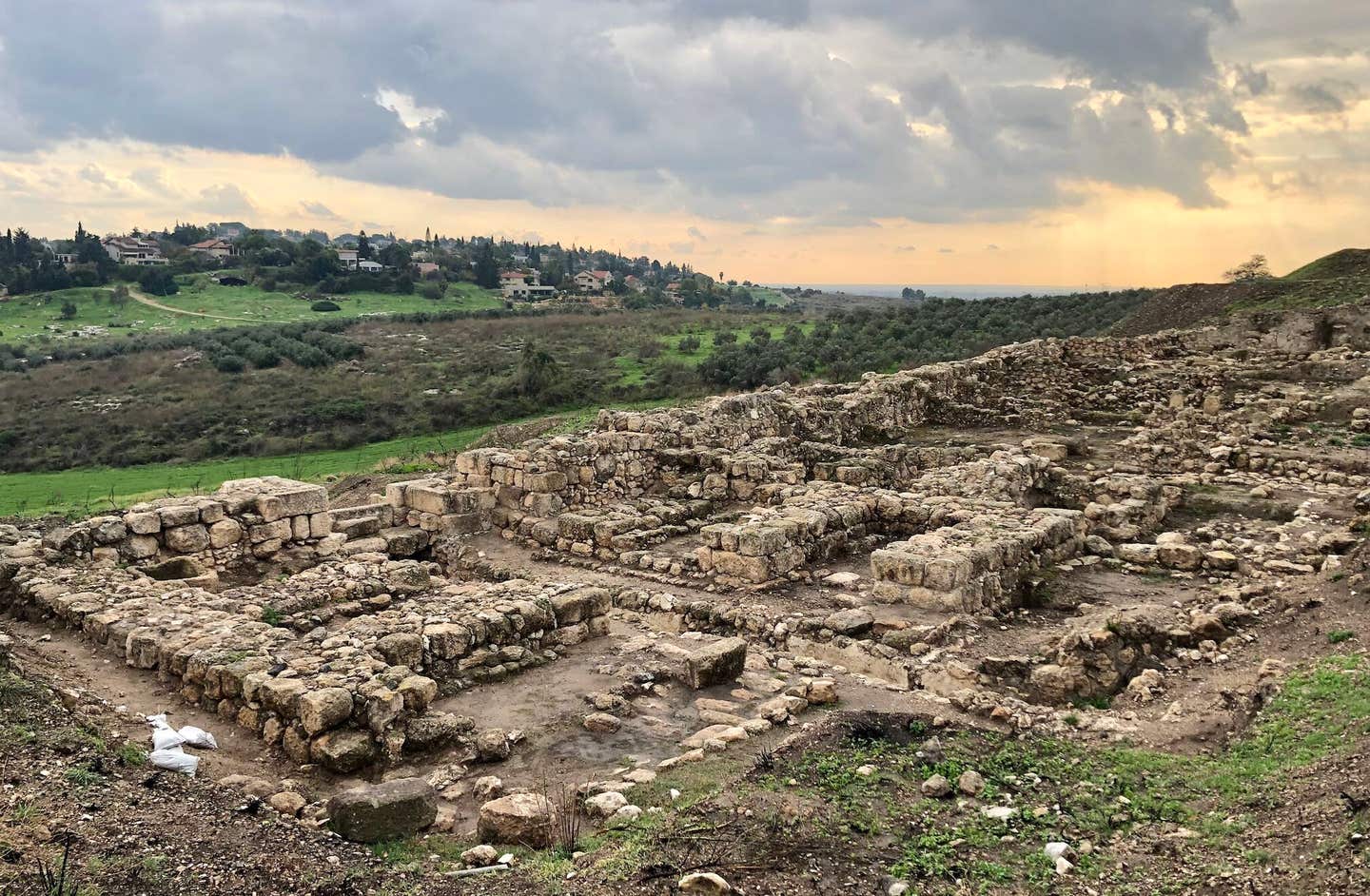Scientists reveal the conflict-ridden history of an important biblical city
Archeologists harnessed the power of radiocarbon dating to reveal the truth behind events chronicled in Egyptian, Assyrian and biblical texts

The “Solomonic” six-chambered gate and attached, palatial administrative building at Tel Gezer. On the southern end of the tel, looking southwest. (CREDIT: AIBA)
Archaeologists have always worked to connect the stories in ancient texts with what lies buried underground. These efforts often involve piecing together fragile remains, one layer at a time, to verify or challenge what’s written in history’s oldest records.
In a major study published in PLOS ONE, researchers used radiocarbon dating to examine events described in ancient scriptures. Their focus was the ancient city of Gezer, a site with deep roots in both archaeology and religion.
Gezer, located in present-day Israel, has long fascinated scholars. It appears in Egyptian inscriptions, Assyrian records, and numerous Biblical passages. Its ruins hold clues to centuries of conflict, culture, and rebuilding.
Now, thanks to cutting-edge radiocarbon methods, the city’s past is being seen with fresh eyes. This new data both confirms and questions parts of Gezer’s recorded history, offering a more detailed timeline of what truly happened.
Unlocking the Secrets of Ancient Times
To piece together this timeline, researchers collected and dated 35 organic samples, mostly seeds, buried in layers of Gezer’s soil. These materials were uncovered from destruction layers and rebuilding phases spanning from the 13th to the 9th centuries BCE.
That stretch of time saw sweeping changes in the city’s fate. It included violent upheavals, repeated reconstructions, and shifting powers. Each sample revealed a part of the story, helping archaeologists map the rise and fall of this historic city.
Related Stories
Lyndelle Webster, a co-author from the Austrian Academy of Sciences, highlighted the breakthrough. “Our publication provides the first radiocarbon-based chronology for Tel Gezer in the period 13th through 9th centuries BCE,” she said.
This allowed us to independently test whether the correlations that have been proposed between certain archaeological layers and events from written sources are feasible from a chronological point-of-view."
Matching the Pieces of the Puzzle
As the radiocarbon dates began to emerge, they wove a tapestry of Gezer's history, aligning with certain events vividly detailed in Biblical and other ancient texts. One such match was the destruction of Gezer under the reign of the pharaoh Merneptah, a momentous event that echoed across the ages.
The study's findings paint a vivid picture of this destructive episode. "Most walls of the administrative building had fallen in the same direction (westward), and the structure was buried in up to 1.5 meters of mudbrick debris; concentrations of boulders filled some rooms," the study noted.
This devastation appeared to have caught the city's inhabitants off guard, as the building was discovered mostly empty.
Furthermore, the research team discovered compelling evidence supporting the Biblical account of the ancient Egyptian king Shishak's involvement in the fall of Gezer. This revelation, backed by radiocarbon dating, adds weight to the historical narrative, solidifying the existence of Shishak as the first Egyptian king mentioned by name in the Bible.
The destructive event associated with Shishak, much like that of Merneptah, aligned with the radiocarbon dates, suggesting that the ancient city of Gezer bore witness to a fiery and sudden demise.
Challenges to Historical Correlations
However, not all correlations between Gezer's archaeological record and ancient texts stood the test of time. The radiocarbon dating results cast doubt on the proposed link between Gezer's fall and the campaign of Hazael, an ancient ruler first mentioned in 1 Kings 19:15-17.
"These dates suggest, for example, that the correlation of a certain destructive episode with the actions of the pharaoh Merneptah is plausible, while the proposed link between another such episode and the campaign of Hazael is not," the study's press release pointed out.
While Hazael's campaign may have been a significant historical event, it appears that it did not leave a discernible mark on Gezer's archaeological record during the specified period.
The Quest for Truth Continues
This groundbreaking study not only uncovers the hidden layers of Gezer's history but also provides a robust dataset that will enable researchers to explore the intricate interplay between archaeological evidence and ancient texts.
By offering an independent source of absolute dates, this research allows scholars to better understand the events that unfolded in Gezer and place them within a broader regional context.
As the findings reveal, Gezer bore witness to destructions associated with powerful figures like Merneptah and Shishak, reinforcing the historical narratives present in the Bible. These revelations breathe life into the annals of history, allowing us to connect more deeply with the past.
Nonetheless, the study's challenges to previously held correlations serve as a poignant reminder that the quest for historical truth is an ongoing journey. It prompts us to continue exploring the intricate tapestry of history, unearthing hidden stories and deciphering the mysteries of our ancient past.
As we delve deeper into the annals of time, the radiocarbon dating technology continues to be an invaluable tool, shedding light on the shadows of history and revealing the truths that lie beneath.
Note: Materials provided above by The Brighter Side of News. Content may be edited for style and length.
Like these kind of feel good stories? Get The Brighter Side of News' newsletter.



